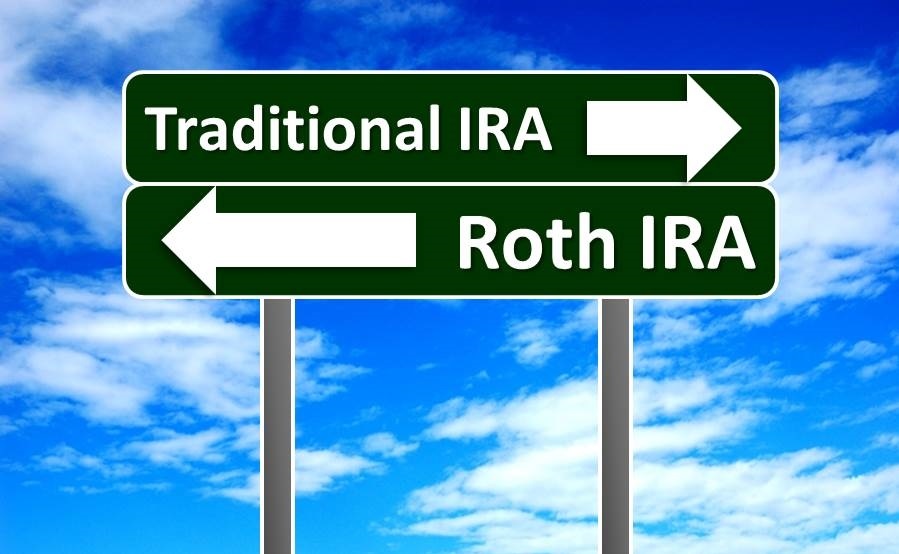Business News
Traditional vs. Roth IRAs: Which retirement account is correct for you?

Retirement planning is an essential part of ensuring financial wellness and long-term security. One of the most commonly used vehicles to save for retirement are Individual Retirement Accounts (IRAs).
When it comes to saving for your future, there are two main types of IRAs — Traditional IRAs and Roth IRAs.
However, when faced with the dilemma of which type to choose, making a decision can be complicated due to the differences in their benefits and requirements. To help you decide which type might be best for you, look deeper into how each account works and their unique advantages or drawbacks that could influence your choice.
What is a Traditional IRA, and how does it work compared to a Roth IRA
Individual Retirement Accounts (IRAs) are popular investment vehicles designed to help individuals save for retirement. A traditional IRA is a type of IRA in which contributions are tax-deductible in the year they were made. The tax-deferred growth of the investment helps accrue retirement savings until retirement age, where withdrawals are taxed as income. In contrast, a Roth IRA allows contributions to be made using after-tax dollars, providing tax-free withdrawals for contributions and earnings at retirement age.
Both types of IRAs offer unique advantages and disadvantages, and it is essential to consider individual investment goals when deciding which plan to choose. Those looking to diversify their retirement investments may consider investing in IRA gold investment as part of their overall retirement investment portfolio.
Understanding your eligibility for each type of account
Investors should consider their annual income when determining eligibility for either type of IRA. Contributions to a traditional IRA are tax-deductible in the year they were made and will be taxed as ordinary income at retirement age. Individuals may still contribute to a Roth IRA even if they have already contributed to a Traditional IRA for the same taxable year. Still, there are certain restrictions based on earned income and filing status.
In addition, Traditional IRA contributions are limited to $6,000 per year for individuals younger than 50 and $7,000 for those aged 50 or older. Roth IRAs have the same contribution limit with a maximum of $6,000 for both age groups.
Tax advantages of each type of account
The difference between these two retirement accounts lies primarily in their tax advantages. Traditional IRAs allow for contributions to be made with pre-tax dollars, meaning that when taxes are due on investment earnings, they are paid at the income tax rate at the time of withdrawal.
On the other hand, Roth IRAs offer after-tax contributions with no tax liability due on withdrawals. This tax-free status makes Roth IRAs desirable for those who expect their earnings to be higher in retirement than in their current working years.
Pros and cons of both types of IRAs
When deciding which type of IRA is best for retirement savings, weighing the pros and cons of each account is essential. Traditional IRAs offer an advantage in that contributions are tax-deductible in the year they were made. It reduces the investor’s taxable income, which can result in a lower overall tax rate. Additionally, Traditional IRA contributions can be made until the age of 70 ½, and withdrawals can begin at the age of 59 ½ without penalty.
On the other hand, Roth IRAs offer tax-free withdrawals with no taxable income due on withdrawal. It makes them a desirable option for those who expect to earn more in retirement than they do currently.
How to decide which retirement account is correct for you
Ultimately, the decision of which type of retirement account to choose can only be made by an individual based on their unique financial situation. Generally speaking, those who expect to be in a higher tax bracket upon retirement may benefit more from the tax-free withdrawals a Roth IRA offers.
Those looking to reduce their taxable income in the current year may consider a traditional IRA, as contributions are deductible in the year they were made. Additionally, those who want to diversify their investments may choose to invest in other forms of retirement savings vehicles, such as IRA gold investment options.
Tips on how to potentially maximize the benefits of your chosen retirement vehicle
When investing for retirement, several strategies can be used to potentially maximize the benefits of your chosen IRA. For traditional IRAs, it’s essential to take advantage of tax deductions by contributing early in the year before taxes are due. Additionally, investors should consider reducing taxable income, such as maxing out contributions and taking full advantage of employer-sponsored retirement plans.
For those investing in a Roth IRA, it’s important to contribute as much as possible each year to benefit from the tax-free withdrawals at retirement age. Additionally, investors should consider diversifying their investments by allocating funds between stocks, bonds, and alternative assets such as gold or real estate.
Conclusion
When deciding which type of retirement account to choose, it is essential to consider your financial situation and goals. A traditional IRA may be the better option for those looking to reduce their taxable income in the current tax year. Alternatively, those expecting to enter higher tax brackets in retirement may benefit more from a Roth IRA as contributions and investment earnings are tax-free upon withdrawal.
It is also essential to consider other forms of retirement savings, such as IRA gold investments when planning for retirement. By weighing the pros and cons associated with each type of account, investors can decide which vehicle is best for them.